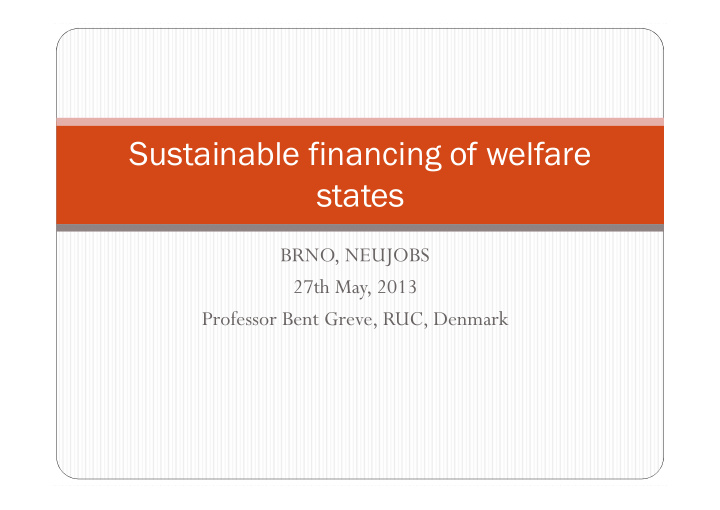



Sustainable financing of welfare states BRNO, NEUJOBS 27th May, 2013 Professor Bent Greve, RUC, Denmark
Tax-revenue in Europe � EU-27 tax revenue 40 % of GDP in 2011, a slight increase from 2009 and 2010 � Peak in 1999 with 42.5 % � Highest in Denmark, Belgium and France � Lowest in Lithuania, Bulgaria and Latvia � Slightly trends towards convergence � Green-taxes only a limited amount average in 2010 around 2.5 % of GDP
Energy tax revenues has been declining Graph 1.22: Energy tax revenues in relation to final energy consumption (real ITR on energy) Euro per tonne of oil equivalent, deflated with cumulative % change in final demand deflator (2000=100) 200 190 180 170 160 150 2000 2001 2002 2003 2004 2005 2006 2007 2008 2009 EU-27 EA-17 Note: GDP weighted average Source: Commission services
Some general sustainable ways of financing welfare � Broadening tax-base � less deductions in taxable income � Taxes on immobile factors � Taxes and duties on environmental damaging actitivies � including use of non-renewable sources (for example, oil) � Sustainability also implies better management of � good � and � bad � times
Some general sustainable ways of financing welfare � Full-employment strategies � the welfare states as investment states � Ensuring compliance of tax-payers � Reduce use of tax-heavens � international co-operation Conclusion: A variety of strategies that respects national boundaries and international economic integration
Recommend
More recommend